In this article, Chris Taneda writes about how to run a successful dojo, concentrating on his approach to teaching. Chris runs the West Bank and Penticton, B.C. schools, which boast, at peak season, more than 500 students. Chris has nurtured a variety of provincial, national and international competitors, and has himself been on the national team many times.
I have been asked by my good friend Peter to write an article for this edition of Kime. The suggested subject of this story was how to run a successful dojo or how to coach successful athletes. At first, this seemed like a fun thing to do. As I pondered how to handle the piece, I began to realize that my friend was probably sitting back in his office chair with a smug expression on his face, giggling about the anxiety I was experiencing.
My first task was to define the topic. Webster seemed to have its own sense of humor, telling me that “success” means: “The termination or result of any affair, whether happy or unhappy; the issue; more especially, a favorable or prosperous termination of anything attempted.” Since I didn’t like the idea of being terminated, I decided to look for other definitions. I came across a couple that I like. The first is from Robert Collier: “The great successful men of the world have used their imagination. . . . They think ahead and create their mental picture, and then go to work to materialize that picture in all its detail, filling in here, adding a little bit there, altering this a bit and that a bit, but steadily building-steadily building.” And then Kenneth Hildebrand: “Strong lives are motivated by dynamic purposes, lesser ones exist on wishes and inclinations. The most glowing successes are but reflections of an inner fire.”
I believe that success is defined by goals. Each dojo’s goals depend on the sensei’s purpose for starting the dojo. Its success will depend on how closely it adheres to that purpose. My first goal in starting a dojo was to have training partners to practise Chito-Ryu karate with. I envisioned people who were as hungry I was to learn, and who had the discipline to keep learning. I knew that if the proper attitude was fostered, a group of enthusiastic karateka could inspire one another to reach higher levels than someone training on their own. My second goal was to have a dojo that would keep traditional standards of technique but be creative in the teaching process. My third goal was to create a dojo that did things that I believed could be done, as opposed to what many people said could not be done. My fourth goal was to devote myself to teaching and learning karate full-time. This meant that I would have to derive my living from karate. When someone says to me, “When will you get a real job?” I usually think that person does not like what they do for a living.
The Penticton and West Bank dojos have been pretty successful in achieving these four goals and will continue to strive to live by their dictates and improve.
As a sensei, I feel I have a responsibility to my students to keep on improving my technique, understanding and teaching abilities. I am a firm believer in the aphorism, “Either you are getting better or you are getting worse. You will never stay the same.” O-Sensei’s saying, “Katte kabuto no oh shime yo” (“When you win, tighten your helmet straps,” or, more colloquially, it translates as “Don’t live on your laurels”), applies to more than battle. Students learn by example. When I train and improve, so do my students.
I spend a lot of time investigating the learning process. As a communicator I have the responsibility of transferring my knowledge to each student. To be an effective instructor requires more than knowledge. I am amazed by how quickly humans can learn and how much this progress can be retarded by an instructor’s restricted thinking. This concept keeps me on my toes, working to become more informed, so my students have a better chance to excel.
I have crossed over to many new areas to improve instruction at our dojo. I use many right-brain teaching methods. We have used information from Touch for Health and Educational Kinesiology for Kids, which helps us to recognize “homolateral” individuals and to give them exercises to laterally integrate both hemispheres of the brain. I use many communication skills employed by Milton Erickson, which are the basis for what has been called “Neurolinguistic Programming.” We have used African drumming to improve speed and learning capabilities. In short, I believe we are making many paradigm shifts. A paradigm is a way of thinking, a set of rules, so to speak, that establishes boundaries and tells you how to behave inside the boundaries in order to be successful. “An old dog can’t learn new tricks” is one paradigm I don’t follow. I find much excitement watching students reach potentials they did not think they could reach.
Well, thanks, Peter, for getting me excited about teaching my four classes tonight. Enthusiasm breeds enthusiasm. If this is success, then I want more of it. I will continue to work by this paradigm: “Old dogs want to learn new tricks, because they are so bored with the old ones.” -Chris Taneda

